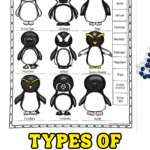Different Types of Penguins Worksheet (Free Printable)
Learn about penguin species with this fun and educational types of penguins worksheet for kids!
The printable includes nine different penguin illustrations, like the Yellow-Eyed, Galapagos, Royal, and Humboldt penguins, each labeled to help children recognize and remember their names.
Perfect for homeschool, classroom, or zoo lessons, this activity combines science and creativity as kids color and match species.
A great way to make learning about penguins visual, interactive, and fun for early elementary ages.
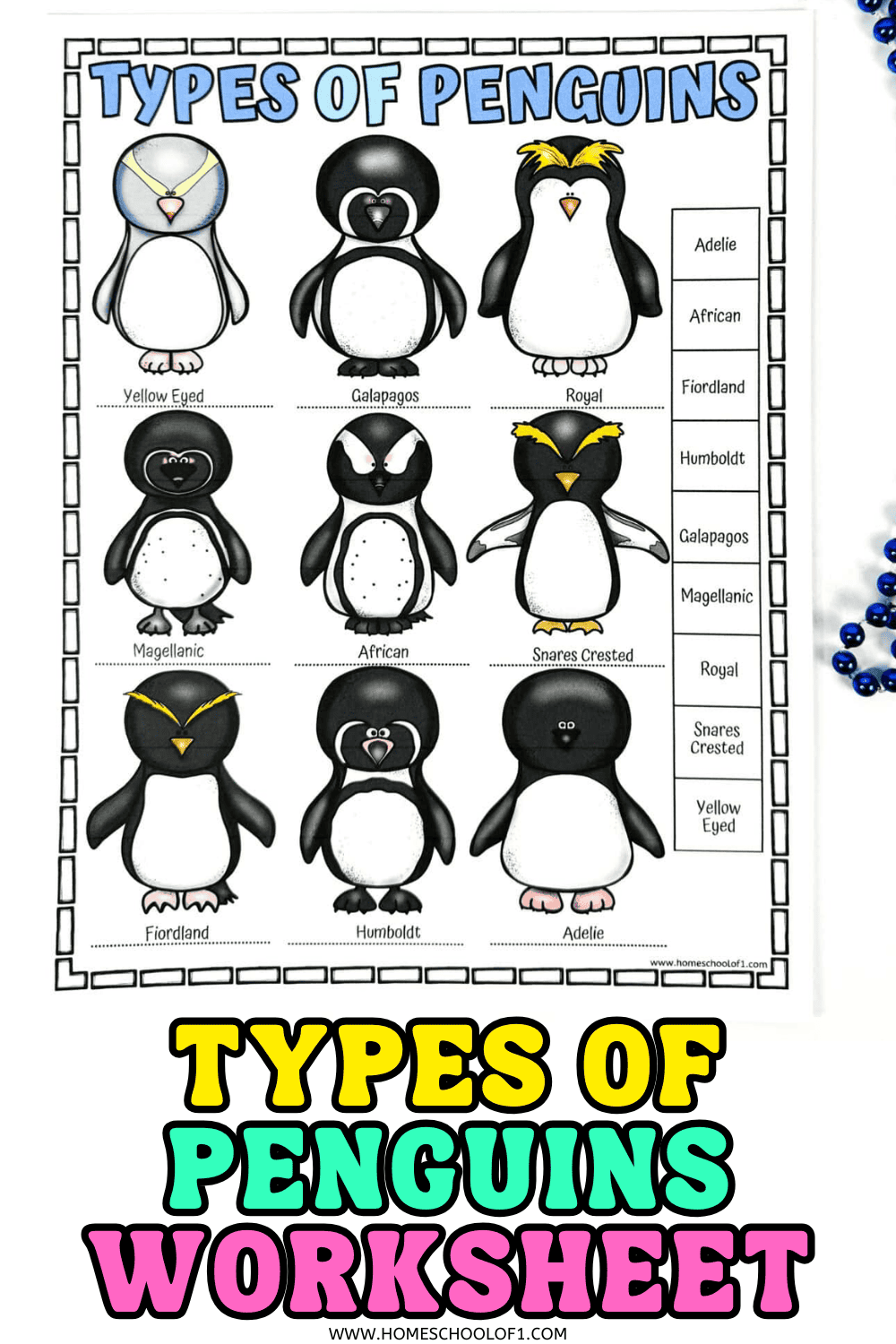
**This post may contain affiliate links. As an Amazon Associate and a participant in other affiliate programs, I earn a commission on qualifying purchases.**
Different Kinds of Penguins Worksheet
This types of penguins worksheet set includes three engaging pages that are free for personal and classroom use.
It’s a simple but effective way for kids to learn about penguin species while building observation and labeling skills.
The first page features a full-color poster with illustrations of different penguin species, each labeled with its name. It’s great for visual learners and works well as a classroom display or part of a homeschool science unit.
The second page offers a black-and-white version that children can color, helping them remember each species through creative expression. The final page includes a word bank so kids can practice identifying and labeling each penguin correctly.
We used this activity during our animal science lessons, and Freddie enjoyed matching the penguin names to their pictures, it made the lesson feel like a mini field trip to the Antarctic.
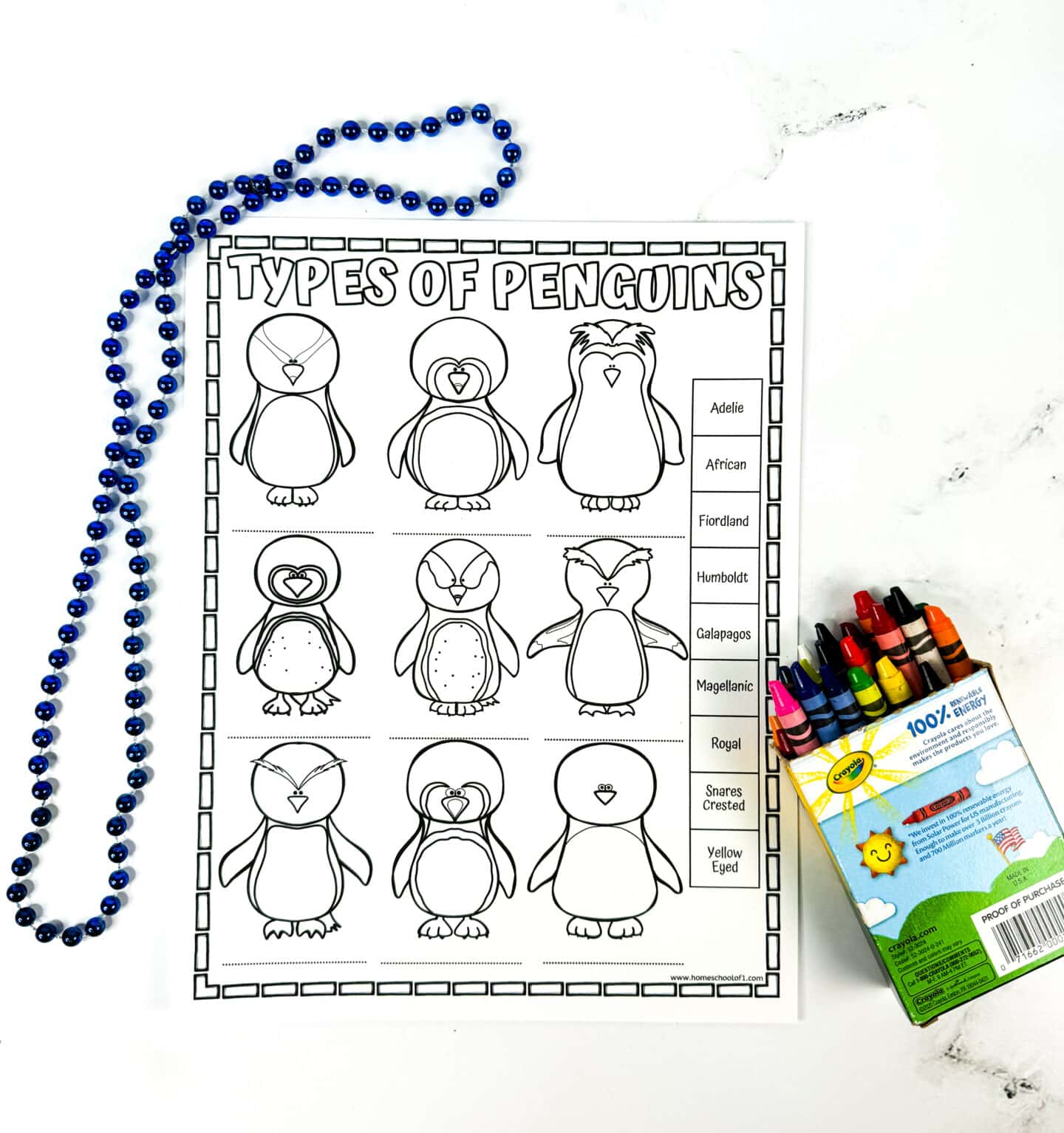
Meet the Penguin Species
There are many different types of penguins, each adapted to its own climate and environment. These quick facts pair nicely with the worksheet:
Adélie Penguin – Small and fast, living on the Antarctic Peninsula and feeding mainly on krill.
African Penguin – The “jackass” penguin of South Africa, known for its braying call and love of warm beaches.
Fiordland Penguin – From New Zealand’s rainforests, easy to spot by its bright yellow eyebrow stripes.
Humboldt Penguin – Found along the rocky coasts of Peru and Chile, named after the cool Humboldt Current.
Galápagos Penguin – The only species north of the equator, thriving in the warm Galápagos Islands.
Magellanic Penguin – Burrow-nesting penguins from Argentina and Chile that dive deep for fish.
Royal Penguin – White-faced birds with yellow crests that breed on Macquarie Island.
Snares Penguin – From New Zealand’s Snares Islands, known for strong pair bonds.
Yellow-Eyed Penguin – Rare and shy, with pale yellow eyes, found only in New Zealand.
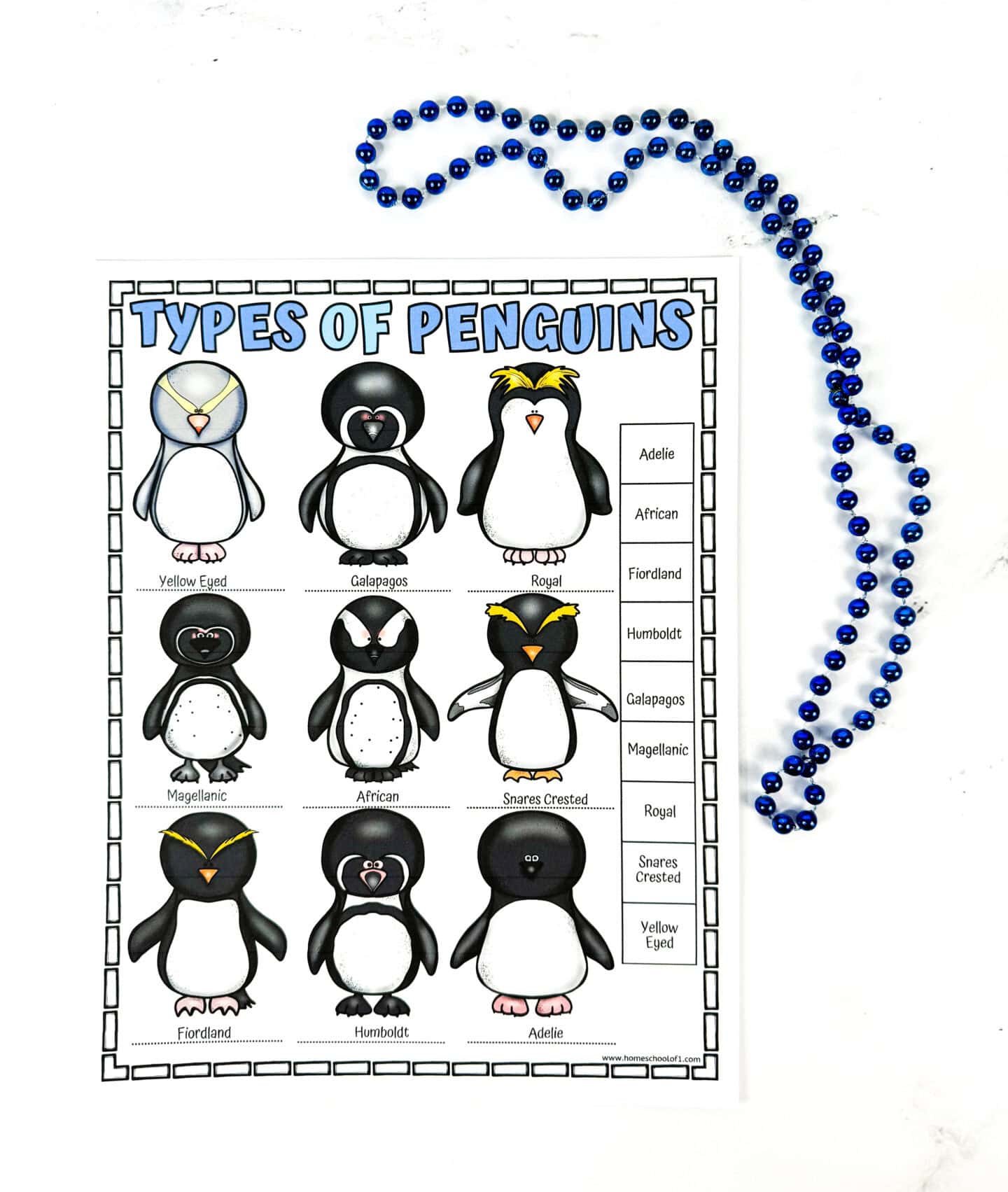
These species show how penguins live in very different worlds, from icy Antarctica to sunny island coasts.
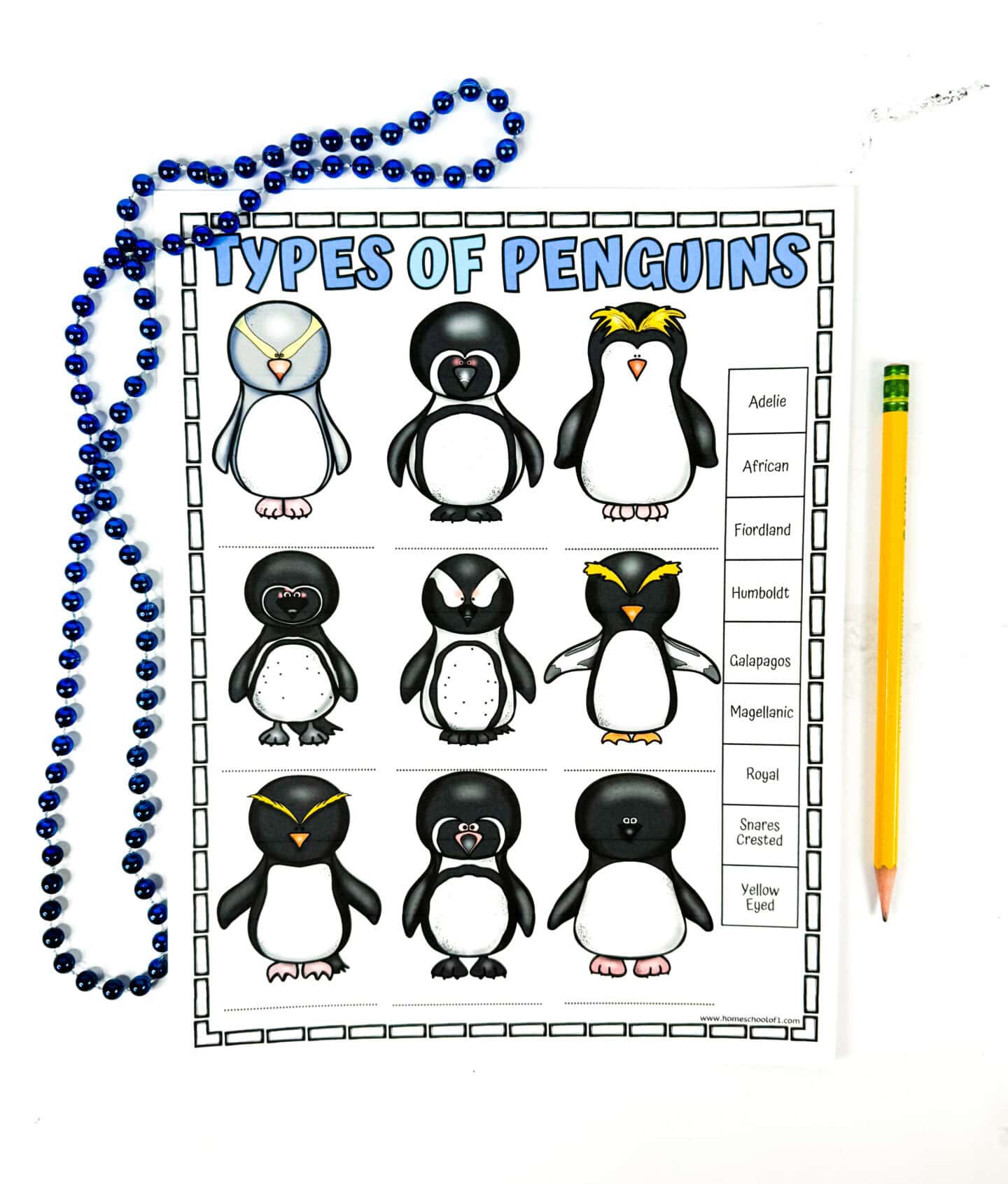
More Penguin Resources
Have fun with these additional penguin activities:
- Life Cycle of a Penguin Worksheet – Track each stage from egg to adult to see how penguins grow and change.
- Penguin Handprint Art – Use paint and handprints to create adorable penguin crafts while practicing fine motor skills.
- Anatomy of a Penguin Worksheet – Label flippers, beaks, and webbed feet to explore how penguins are built for life in the water.
- Penguin Matching Game – A fun way to boost memory and recognition as kids pair up penguin images.
Also try: our free types of birds worksheet, perfect for comparing how different animals adapt to their environments.
Penguin Books for Kids
When we worked on our types of penguins printable, these nonfiction books helped bring the science to life. They’re full of real facts and photos that kids can connect directly to what they’re learning.
- National Geographic Kids: Penguins! – Bright photos and short facts make this perfect for early readers. Freddie loved spotting each species we talked about.
- Penguins and Antarctica – A companion to the Magic Tree House Fact Tracker series, this one dives into penguin habitats and life in the polar regions.
- Emperor Penguins – Simple but detailed, with real images that show how penguins survive the harsh Antarctic climate.
These books keep kids engaged while grounding your printable in real-world science and geography.
Get Your Free Printable Penguin Worksheets Here!
If you don’t see the form below, click here to get the free worksheets.
Last Updated on 23 October 2025 by Clare Brown

